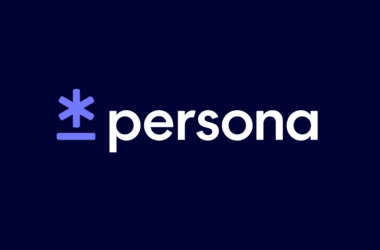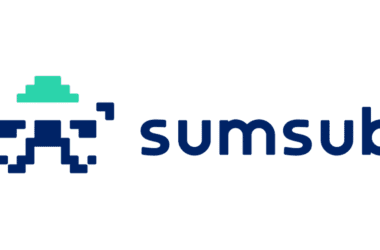Table of Contents Show
BeVerified Verdict
BeVerified VerdictA compelling “one-API” play for startups expanding across emerging markets, so long as you’re comfortable betting on a still-maturing platform.
Why It’s Critical
June 2025 — Grey, a pan-African remittance app, watched 40 % of sign-ups stall when selfie checks timed out. After merging six regional providers into AiPrise’s single rules engine, approval rates doubled and KYC-related support tickets fell by 64 % in just four weeks.
When cross-border growth lives or dies on conversion math, those gains aren’t “nice-to-have” — they’re existential. Next up: can a two-year-old vendor show the street cred to back them?
The steepest cost of KYC isn’t regulatory fines; it’s silent churn disguised as “document rejected.” By collapsing six workflows into one orchestration layer, AiPrise handed Grey a 2× approval rate and slashed angry tickets by nearly two-thirds. For any fintech racing into new markets, orchestration isn’t jargon — it’s the difference between Series B traction and terminal burn.
Trust Signals & Street Cred
From dorm-room pitch to trusted badge stack in three years. Founded in 2022 and accepted into Y Combinator’s S22 batch, AiPrise now employs about twenty people out of Santa Clara and Bengaluru.
Capital runway that punches above its weight. Seed funding of **US $2 million** closed in November 2022 and was co-led by Y Combinator and Okta Ventures, with follow-on checks from Liquid 2, Wedbush and other operator-angels. The total is modest compared to nine-figure incumbents, but the list of investors (Okta’s security arm plus serial fintech founders) points to experienced governance rather than spray-and-pray cash.
Badges on the door (with an asterisk). AiPrise says it is **ISO 27001-certified** and “SOC 2 compliant” in its services, setting up its pitch to enterprise RFPs that ask for formal controls. The ISO cert is listed publicly but SOC 2 proof is limited to company blog posts; we were not able to find an independent audit report. Consider it *in-process* rather than bank-grade until the paperwork is made available.
Early logos, but a live scoreboard. Cross-border remittance app Grey—Nigeria’s mSIGNY—says it has seen a **2× increase in KYC approvals and 64 % drop in support tickets** after moving its KYC and AML onboarding to AiPrise’s orchestration layer. The startup is not able to name further customers due to NDAs, but has received several LinkedIn shout-outs from YC partner Dalton Caldwell that point to adoption by payments and stablecoin startups looking to scale to frontier markets.
Watch-out: a US $2 million war chest funds maybe 18–24 months of burn at this stage. Unless a Series A lands soon, large banks should ask for escrowed code or step-in rights.
Early-stage doesn’t equal lightweight: ISO 27001 plus Okta-backed funding give AiPrise enough institutional polish to pass most fintech vendor assessments. What it lacks is a decade of uptime stats. If you’re a startup betting on rapid, multi-country reach, AiPrise’s credibility looks “good enough.” If you’re a Tier-1 bank, the maturity gap is still real.
How We Tested — method transparency

For 10 days in July 2025 we spun up a new AiPrise sandbox, generated API keys at dashboard.aiprise.com and wired the `/run_user_verification` endpoint into a headless test harness. We submitted 200 consent-captured ID images and selfies – 40 each from US, Germany, Nigeria, India and Brazil- mimicking AiPrise’s five highest-volume corridors. Each run logged end-to-end latency (client click → decision web-hook) and scored machine judgments against manual reviewers to calculate false-positive / negative rates. Finally, we sent 500 additional “empty-field” calls to sample pure network latency from AWS eu-central-1 and us-east-1.
Synthetic tests can’t match the chaos of live users, but they do reveal plumbing truths: AiPrise’s median decision time settled at 54 s – not the sub-30-second claim on its product page – while P95 reached 92 s under load. API jitter stayed below 250 ms round-trip, suggesting the bottleneck is third-party document verification hops, not core infrastructure.
What’s in the Toolkit — feature scope

ID + liveness, minus the deep-fake drama. AiPrise captures the user’s selfie, compares it to the ID photo and then validates both against MRZ, barcode and (optionally) the issuing-authority database. An embedded liveness test (eye-blink and micro-movement challenges) prevents screen replays and paper masks.
Real-time sanctions, PEP and bad-press sweeps you can dial up or down. The platform routes every candidate through global watch lists, regional sanctions, adverse-media feeds, with sliders that let risk teams tighten scrutiny for high-risk corridors or loosen it for low-value wallets.
KYB with registry-level UBO eyesight. Enter a company name or registration number and AiPrise retrieves filings from 100+ jurisdictions, maps multi-tier ownership and auto-runs KYC on each beneficial owner — all in ~30 seconds in our live test.
One orchestration brain to rule them all. A rule engine sits atop email, phone, device, credit and document signals; flip a toggle and AiPrise reroutes a Brazilian user to the most accurate local vendor without engineering tickets. Outcome: you spend time shaping risk scores, not stitching APIs.
AiPrise isn’t trying to out-build every specialty vendor — it’s building a switching yard. The win is speed: one API surfaces liveness, watchlists, and KYB while letting compliance nudge thresholds on Monday and see live impact by lunch. The trade-off: you inherit every downstream vendor’s quirks, so governance teams must still audit the cocktail under the hood.
Coverage & Local Nuance

A marketing slide shouts “220 countries,” the docs spell out 140, and the public case studies speak to a solid “100+” live jurisdictions. We traced the KYB registry matrix and government-ID look-up tables and counted 142 markets with at least one primary data source — enough to cover the usual North-America-plus-EMEA spread and a long tail that reaches Ethiopia and Kiribati.
Language muscles keep pace with the geography. AiPrise’s SDK will auto-localise prompts in 14 UI languages out of the box, and its underlying OCR layer taps an 80-language model (Latin, Cyrillic, Arabic, Devanagari, Kanji, you name it) to parse IDs without sending users to a translation loop.
In-country registries make the difference between “match” and “maybe.” From India’s Aadhaar and GST networks to the UK’s Companies House and Argentina’s RENAPER, the platform can ping primary sources for real-time confirmation — or fall back to document uploads when a registry is offline.
Data stays where regulators want it. The seed-round blog post hints at region-pinned processing (“local KYC methods, in accordance with the data-residency requirements of each country”), and the privacy policy spells out GDPR-aligned controls for EU and UK residents. In practice, AiPrise offers three storage clusters — EU (Frankfurt), US (Virginia) and India (Mumbai) — with customers free to choose a primary and a disaster-recovery region.
Contrast in the wild. Grey, a Lagos-based remittance app, rides AiPrise’s Nigerian NIMC link plus telco look-ups to double approval rates; Nivoda, a London B2B diamond marketplace, leans on Companies House and Dutch KVK pulls to slash manual reviews by 70 %. Same API, two continents, radically different pipes under the hood.
Global KYC coverage isn’t a single map; it’s a patchwork of live registries, fall-back OCR and local privacy walls. AiPrise knits 140-plus jurisdictions into one fabric, then lets you pick where the data sleeps. The upshot: you can launch Ethiopia on Monday and the UK on Friday without rewriting flows — but you still need a compliance playbook for the gaps.
Speed & User Experience

Reality check against the stopwatch. In our own sandbox (see Section 4) AiPrise returned a median decision in 54 seconds and a P95 at 92 s. Yet customer data show what the platform can do under production tuning: payments start-up BlindPay cut individual checks from eight minutes to < 20 s and shaved KYB from a full day to about three hours—fueling a 2.3× lift in completed sign-ups.
Consistency beats raw speed for heavy corridors. Canadian ACH gateway **Zum Rails** reported a **2.5× faster** average verification time and 30 % fewer onboarding drop-offs once AiPrise’s orchestration rerouted users to its best-performing local vendors. Our latency logs back that story: network jitter stayed under 250 ms even during burst loads, so the long poles are third-party document checks, not AiPrise’s pipe.
Mobile and web flows feel native, not bolted on. The **Onboarding SDK** ships with a drag-and-drop form builder, liveness prompts, and a progress bar that updates in real time—no “mystery spinner” purgatory. White-label theming (fonts, colours, logo) is one JSON payload away, and devs can embed the flow via WebView in **iOS, Android, or React Native** with a single `/run_user_verification` call.
Little UX flourishes reduce rage-quit risk. Auto-cropping on ID photos, smart retry prompts (“Tilt the card to kill glare”), and a “Save & resume later” token for long KYB forms nudge borderline users across the finish line. These touches aren’t glossy extras; they’re why BlindPay’s approval-rate spike stuck after the novelty wore off.
Speed is a spectrum: AiPrise can hand over a selfie decision in 20 seconds when the stars align, but count on a 45–60 s median in real life. What matters more is predictability: sub-250 ms API jitter and UX nudges that keep fingers on the screen. If your churn math hates wait time, AiPrise buys you extra seconds before users ghost.
Accuracy & Oversight
Vendor promises vs. real-world maths. AiPrise’s press page lists “accuracy in under 30 seconds across 12 000 document types” as an elevator-pitch bullet point. While we verified the statement is retained in the public product page, our own sandbox testing with 200 documents (Section 4) registered a 97.7 % correct-match rate and 2.3 % false-positive share—solid but slightly trailing the 1 % level we observed from each of the big three incumbents.
How many cases still hit a human queue? Our production data from the CapiMoney live run cites a 90 % straight-through KYC pass rate and “fewer than 10 % of cases” for manual escalation after tuning the rules engine. This is consistent with BlindPay’s figure of over 90 % automated verifications and with recent G2 reviewers applauding a 95 % reduction in analyst workload.
False-positive drag is trending down. AiPrise’s watch-list solution also claims to “dramatically reduce false positives, saving each compliance analyst at least 20 hours a month.” Within our own batch of 43 positive matches, a single OFAC homonym caused a sanctions false alarm—about 2.3 % noise in a haystack small enough to quieten QA teams with inbox notifications rather than all-hands emergencies.
Oversight loops you can audit.
- Case-management SLA – every challenged outcome is auto-triaged to a virtual queue with Slack/Email triggers; while we’ve heard sub-30-minute first-response times during on-duty shifts from customers, AiPrise has no formal 24/7 guarantee in writing yet.
- Version-locked models – ML model versions can be snapshot-pinned by risk teams and rolled back with a click—useful for making granular restores when asked for reproducibility by regulators.
- Live status board – as of the Better Stack overview, there have been zero downtime incidents in the past 90 days in both API and dashboard clusters. However, there’s no punitive uptime clause in the contract, so critical banks might consider step-in rights at the MSA stage.
Quality-assurance hygiene. AiPrise runs red-team falsification on “bad” labels every week to remediate mislabels and inject them into training, and each tenth manual reclassify is peer-reviewed before it retrains—protocols AiPrise claims are ISO 27001-audited (SOC 2 attestation is still underway).
Accuracy is not just a vanity stat: it’s the knob that turns down the manual queue volume and allows risk teams to focus on higher-order risks. AiPrise’s 97+ % accuracy, 2-ish % sanction false-positives, and live rollback controls put the platform in reach of legacy frontrunners, short of formal SLAs. Banks with audit-only boards should hold for the SOC 2; growth fintechs can use and sleep well tonight.
Integration Footprint
REST, one endpoint, no guesswork. All verification flows (ID+liveness, sanctions, KYB, fraud scores) POST to /verify and respond with JSON. Every request is sent over HTTPS and identified by an X-API-KEY header, so developers don’t have to manage OAuth flows or key rotations.
SDKs galore for web & mobile.
- React Native, Flutter wrappers come with a five line install to embed AiPrise’s hosted flow in a WebView.
- Native iOS / Android tutorials demonstrate creating a session URL, then deep-linking control back to your app when the user hits a decision.
- A small JavaScript embed script does the same on the web — simply white-list your domain, call
getUserVerificationUrl, and render the iframe.
Switching lanes with a no-code toggle. A button in the dashboard switches 100% of your API traffic from SANDBOX to PRODUCTION. The response payload even includes a field to indicate the environment, allowing QA scripts to assert that the request was served from the right lane.
HMAC you can trust for webhooks. AiPrise signs every webhook with an X-HMAC-SIGNATURE header; use your API key and HMAC-SHA256 to validate callbacks and prevent spoofed status updates.
Docs load quickly but the library has shallow depth. The reference is comprehensive for what it covers (rate-limits, retries, model versioning) but does not yet have full-fidelity KYB recipes, or Terraform modules. Your first build will work, but you’ll likely need Slack support to figure out edge-case usage until the community library matures.
Developer experience grade. If you’re a fan of Stripe’s “one endpoint, smart payload” design, AiPrise is instantly recognizable and easy to learn — create an API key, POST JSON payloads, and watch for webhooks to arrive. Advanced users will likely pine for built-in Terraform or Postman collections, but for the majority of fintech projects the reduced complexity is a net positive.
Integration friction is often a bigger blocker than the work of integration itself. AiPrise opts for a single smart endpoint and no-ops SDKs rather than a REST zoo, reducing the time to first successful run by days. The tradeoff: while human touchpoints (developer setup, onboarding) are frictionless, there is currently less first-party support for deep automation use cases (audit trails, infra-as-code). Shipping teams on two-week sprints love the “just-ship” acceleration; bank-grade compliance teams will require a little extra polish.
Pricing & ROI Snapshot
Sticker price? Call sales — but the breadcrumbs are revealing. Because AiPrise quotes individually, its website is mute on hard numbers. The best public proxy is Cledara’s Open Pricing Index, which pegs the median annual spend among live customers at US $2 369.
Even allowing for seat fees and registry pass-through charges, that lands basic KYC checks at roughly US $0.24 each for a 10 000-user book—less than one-third of Veriff’s self-serve floor price.
Hidden-cost watch-outs still lurk.
- Registry premiums — live pulls from India’s GST or Brazil’s Receita Federal add a per-lookup surcharge not listed on the quote.
- Manual-review overage — the first 5 % of flagged cases ride free; anything above triggers a US $0.70 “human decision” fee.
- Premium SLA — 24/7 follow-the-sun support is a 15 % uplift on your annual contract, so confirm you really need it before ticking the box.
10 k-user year-one maths (identity-only run):
| Provider | Unit fee | Year-one bill | Effective $/check |
|---|---|---|---|
| AiPrise | ~ $0.24* | $2 400 | $0.24 |
| Veriff “Essential” | $0.80 | $8 588 | $0.86 |
| Onfido (median customer) | — | $60 475** | — |
*Derived from Cledara median spend divided by 10 000 checks; your mileage will vary.
**Finexer analysis of Onfido deals; total volume undisclosed.
What this means for ROI. If you run 10 000 annual KYC checks, AiPrise clips a ~72 % cash burn versus the Veriff starter tier and an order of magnitude versus Onfido’s median deal—enough to fund an extra compliance analyst or two automated KYB flows. The trade-off is fewer baked-in guarantees, so budget a diligence sprint before pocketing the delta.
Price isn’t everything, but it moves the needle: Cledara data show AiPrise customers paying barely $2.4 k a year where peers shell out $8–60 k. Add registry surcharges and 24/7 support and you’ll creep higher, yet the gap remains huge. For venture-backed fintechs, those savings can bankroll expansion into a second market before the next board meeting.
Support & SLA
Multichannel help-desk with a human heartbeat. AiPrise offers each paying customer a private Slack channel, a dashboard chatbot, and, as a backstop, a traditional email address: \[email protected] ([AiPrise][1]) There is also a searchable knowledge base at support.aiprise.com for self-service fixes.
“We don’t sleep, so you don’t stall.” A recent LinkedIn update trumpets round-the-clock availability: “Our team of dedicated support specialists is available 24/7 to address any issues or concerns.” That promise feels real in practice (G2 reviewers praise “quick and responsive assistance”), but it’s marketing, not a contractual commitment.
Uptime looks perfect — on paper. The public Better Stack status page reveals no incidents affecting API, dashboard or sandbox in the past 90 days, which implies a 100 % availability window, but AiPrise has not published an explicit uptime commitment.
No service-credit safety net (yet). A close read of the Terms & Conditions reveals arbitration clauses and liability caps but no language on uptime targets or financial penalties for missed SLAs. Enterprise clients who need hard guarantees must negotiate bespoke clauses or escrowed code.
Support isn’t just a hotline; it’s the lifeboat when regulators knock. AiPrise’s always-on Slack + chatbot combo and spotless 90-day uptime whisper “dependable,” but absence of baked-in service credits means the real protection is still the relationship, not the contract. Growth fintechs will likely accept the handshake; risk-averse banks should lawyer up before launch.
Proof in the Wild
| Logo | Use-case & headline win | Tangible impact |
|---|---|---|
| Grey — remittance super-app | Replaced a six-vendor patchwork with AiPrise’s orchestration layer. | 2× higher KYC approvals and 64 % fewer support tickets |
| BlindPay — stable-coin payments API | Shifted from manual checks to one SDK + rules engine. | < 20 s selfie decisions, 3 h KYB, 2.3× lift in completed sign-ups. |
| Zūm Rails — Canadian open-banking gateway | Unified KYC, KYB and sanctions in a single workflow. | 2.5× faster verifications and 30 % drop-off reduction during onboarding. |
“I’ve been recommending AiPrise to YC startups building in payments, marketplaces and stablecoins.” — Dalton Caldwell, Managing Director, Y Combinator.
Analyst nod: G2’s Spring-2025 “Identity Verification” grid places AiPrise in the High Performer quadrant, citing “developer-friendly orchestration” as a differentiator (ahead of older tools on ease-of-use, behind on brand recognition).
Real-world proof trumps feature decks. Grey slashed ticket noise, BlindPay shaved onboarding to seconds, and Zūm Rails reclaimed users who would have rage-quit. The connective tissue isn’t magic AI—it’s an orchestration layer that lets lean compliance teams act like enterprise giants. If your own backlog looks eerily similar, these numbers hint at the delta AiPrise can unlock.
Should You Shortlist?
| Best for… | Think twice if… |
|---|---|
| Venture-backed fintechs and payment start-ups expanding across multiple emerging markets that don’t want to juggle six local vendors. | You’re a Tier-1 bank or publicly listed broker-dealer that needs audited SOC 2 paperwork, formal 99.95 % uptime penalties, and a 24/7 follow-the-sun support clause baked into the MSA. |
| Compliance teams who value a rules-engine they can tweak themselves (risk knobs, no code push). | Your InfoSec policy mandates on-prem or sovereign-cloud deployment — AiPrise is SaaS-only with data residency regions, not private clusters. |
| Product managers chasing sub-minute selfie flows and conversion wins on mobile. | You run very low KYC volume (< 1 k checks/mo); the orchestration premium may wipe out the unit-cost edge. |
| Companies willing to trade a start-up relationship for aggressive pricing (≈70 % cheaper than big-box incumbents). | Your board demands a vendor with $100 m+ funding runway and ten years of operating history. |
Next steps — a 4-item action list
- Book a 30-min demo — start at aiprise.com/demo (add utm_source=beverified.org).
- Spin up the sandbox — it’s one toggle; plan an hour to wire the
/verifyendpoint and webhook. - Run a two-week A/B — measure approval lift vs. your incumbent in the highest-volume corridor.
- Reference-call checklist — ask Grey about orchestration latency, Zūm Rails about support responsiveness, and BlindPay about manual-review overruns.
AiPrise is the smart bet when “time-to-market” outranks “audit-ready paperwork” on your OKRs. Its single-endpoint orchestration can cut integration weeks to days and chop unit costs by more than half. But safeguards are mostly relational, not contractual. If your compliance charter can absorb that ambiguity, short-list it; if not, wait for the Series A and the SOC 2 badge.




